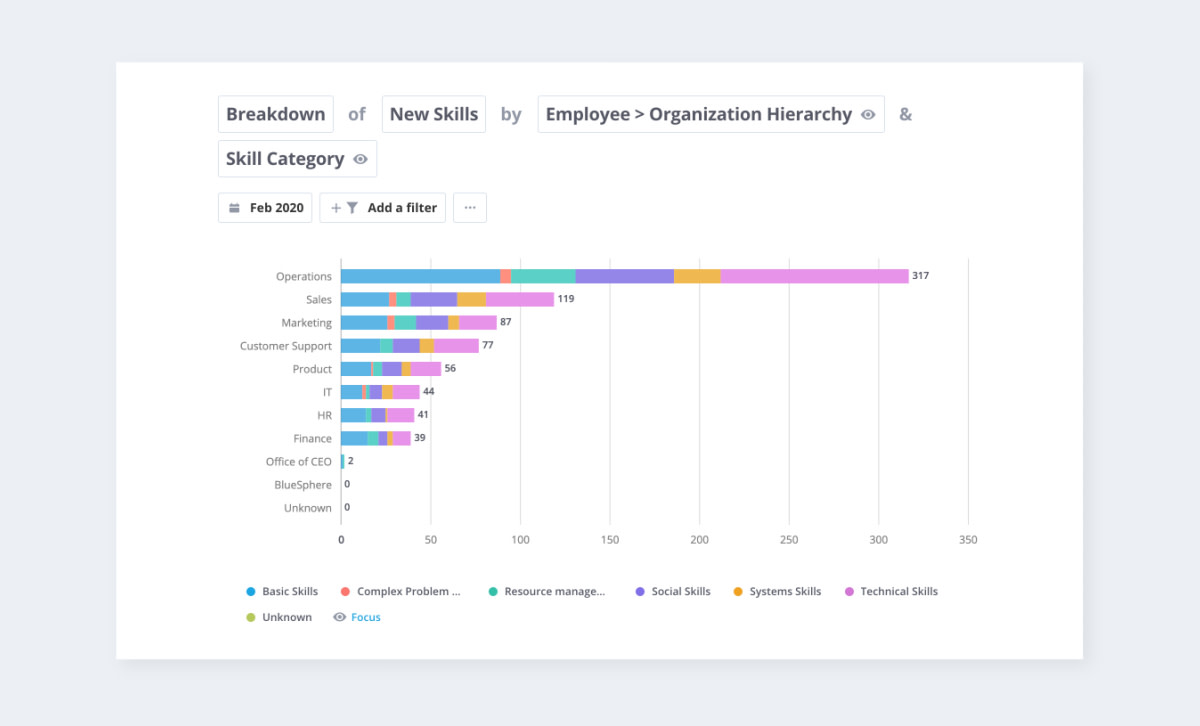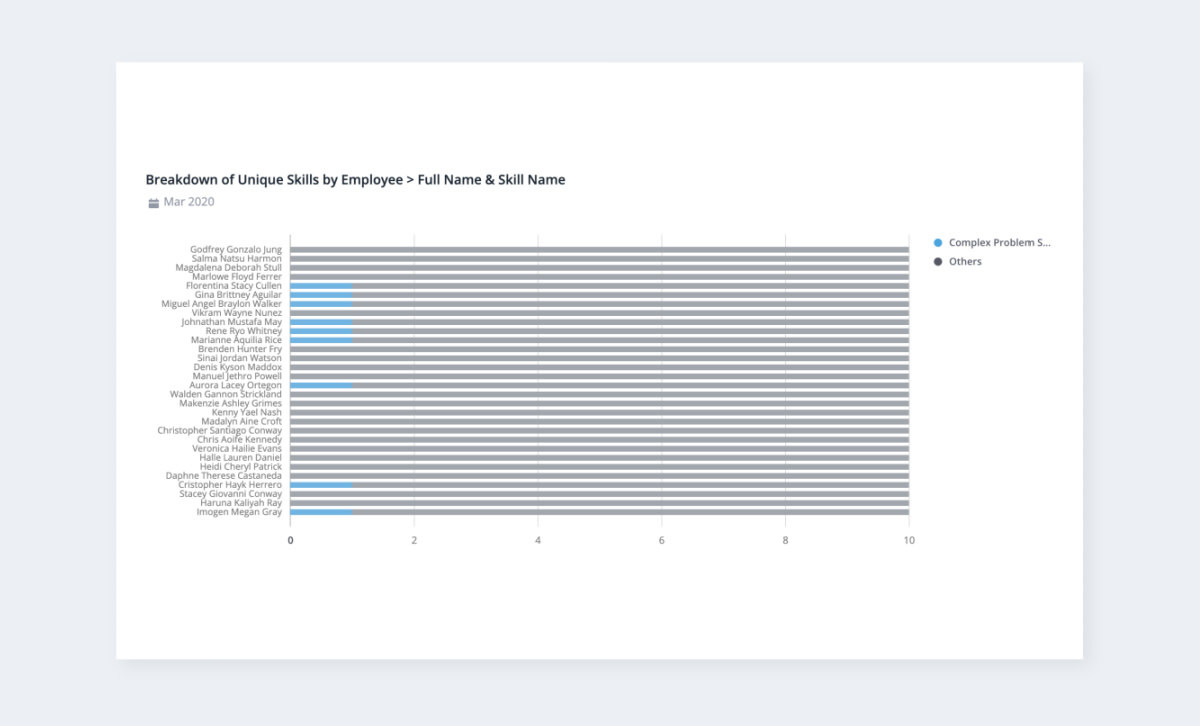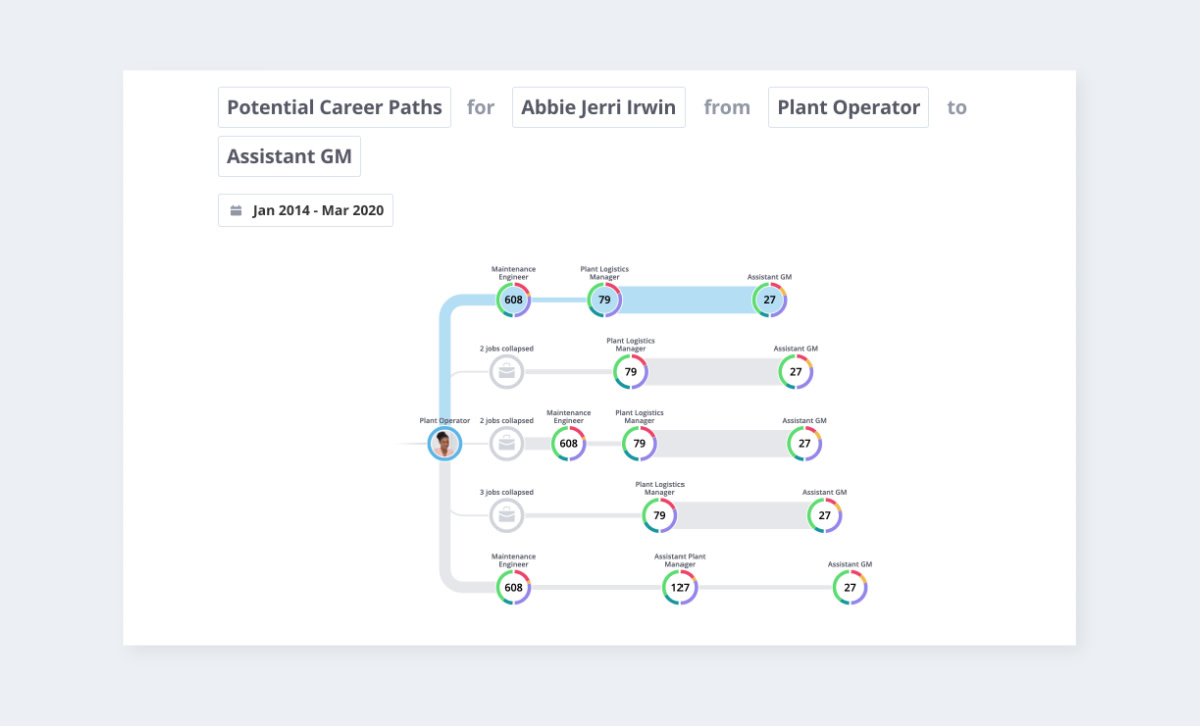How to Develop Better Reskilling Programs and Employee Career Paths
With data-driven career pathing, HR teams can build effective reskilling programs to increase employee retention and business success.

Established companies are reshaping workforces at an unprecedented scale. AT&T, for example, launched an initiative to retrain nearly half its workforce to the tune of $1 billion after discovering that nearly half of its people lacked the necessary skills needed to keep the company competitive. Over a four-year period, Accenture reskilled nearly 300,000 employees, investing approximately $1 billion annually in training.
Additionally, across all types of organizations, automation poses a risk–not through the elimination of jobs–but in the form of skills gaps created by new types of roles. A 2020 McKinsey Global Survey reports that 87% of executives said they were experiencing skill gaps in the workforce or expected them within a few years.
Companies embarking on these critical transformations are doing so in an era of uncertainty. To succeed, a “learn-it-all” culture is needed more than ever, one that helps employees put growth mindsets into practice to fill skills gaps and puts them farther on their career paths.
What are reskilling and upskilling and why are they essential?
Reskilling is the process of learning new skills for a different job, while upskilling is learning new skills aimed at helping people get better in their existing roles. Both are more cost-efficient and effective than hiring a new employee. Research from the Work Institute shows that the average cost of employee turnover is 33% of that person’s salary, while Lighthouse Research found that it takes less than $10,000 to reskill someone for another job.
In a thriving market, reskilling and upskilling can be key drivers of employee retention, while in a downturn economy these programs are more cost-effective alternatives to a reduction in force. But the reality of today is that the goal posts are constantly moving, and determining where, who, and how to reskill so as to make the biggest business impact is not an easy feat. To succeed, your reskilling efforts require a data-driven approach.

This analysis breaks down skills by department within a company, helping to surface where there may be skills gaps. Fictional data used.
First West Credit Union tried different interventions to reduce their turnover: pay increases, improving onboarding, training managers to set reasonable career expectations, and additional training. They then did an ROI analysis on each intervention and found that upskilling their retained employees with additional training led to increased revenue– $200,000 per retained employee and a total return of $2.5 million.
While both a turnover story and a learning story, an additional point here is the value of measuring the ROI not only of reducing turnover, but also the impact of interventions and the importance of measuring these. In this case, the intervention that delivered the biggest impact was additional development, demonstrating the long tail of people analytics work.
However, a data-driven approach to reskilling is much more successful when coupled with a growth mindset.

This analysis shows which employees have complex problem solving skills in an organization. Fictional data used.
Adopting a growth mindset for learning and development
This way of thinking was first identified by Stanford psychologist Carol S. Dweck, who discovered that — when it comes to underlying beliefs about learning and intelligence — people can be separated into two camps: Individuals who believe their talents can be developed (growth mindset) and individuals who believe talents are innate gifts (fixed mindset). Dweck’s main finding is that a growth mindset drives motivation and achievement, while a fixed mindset only gets in the way of success.
Gaining a growth mindset is becoming increasingly important at a time when employees are constantly being stretched to acquire new skills. At the individual level, a growth mindset can help people remain engaged and employable as roles evolve to become less routine and more cognitively or emotionally demanding. For businesses, a “learn-it-all” culture can be their main source of competitive advantage.
But organizations that truly embody a growth mindset, argues Dweck in an HBR post, are “committed to the growth of every member, not just in words but in deeds, such as broadly available development and advancement opportunities.”
Putting reskilling and the growth mindset to work with career paths
One tangible framework on which employees can stretch the canvas of a growth mindset is career pathing. With strategic career pathing, firms can shepherd employees into new roles that are becoming critical to business transformation, helping people grow and gain new skills in the process.
When HR leaders and line managers know how people move from job-to-job within the organization and how quickly they did this in the past, they have the structure they need to discuss real career options, assess timelines, and identify mentors.

Digging deeper into the career path analysis shows the different jobs Annie can take to achieve her goal job title. Fictional data used.
People analytics sifts through all of an organization’s movement history and distill it down into an interactive journey map for use on the front lines of leadership, helping organizations to:
Show the likelihood of every role transition for an employee and presents all the data in an interface that doesn’t require a data science degree to use.
Instantly filter the population by who is currently in a high demand position, and determine the paths they took to get there.
Surface any commonalities, such as business analysts eventually getting into hard-to-fill computer forensics roles. HR can then encourage line managers to broach the idea of a specific role with people who are currently in low-demand roles during career coaching conversations.
Help HR to instantly gain an accurate understanding of how long it typically takes for someone from a non-technical background to move into a particular position, and determine what the average time is for someone to get into that role. The managers and employees can either use this information to reevaluate goals or gain a realistic understanding of how much work is involved.
Uncover hidden gems of mentors who can guide people through tricky transitions.
Learning is a basic human drive. With data-driven career pathing, people can put this natural affinity into motion going farther and achieving more–for themselves, and the business. This way, learning becomes more than a perk to keep employees engaged or a compliance requirement–it becomes an engine for business transformation that propels long-term growth.
A version of this article first appeared in TechHR Series.
On the Outsmart blog, we write about workforce-related topics like what makes a good manager, how to reduce employee turnover, and reskilling employees. We also report on trending topics like ESG and EU CSRD requirements and preparing for a recession, and advise on HR best practices like how to create a strategic compensation strategy, metrics every CHRO should track, and connecting people data to business data. But if you really want to know the bread and butter of Visier, read our post about the benefits of people analytics.


